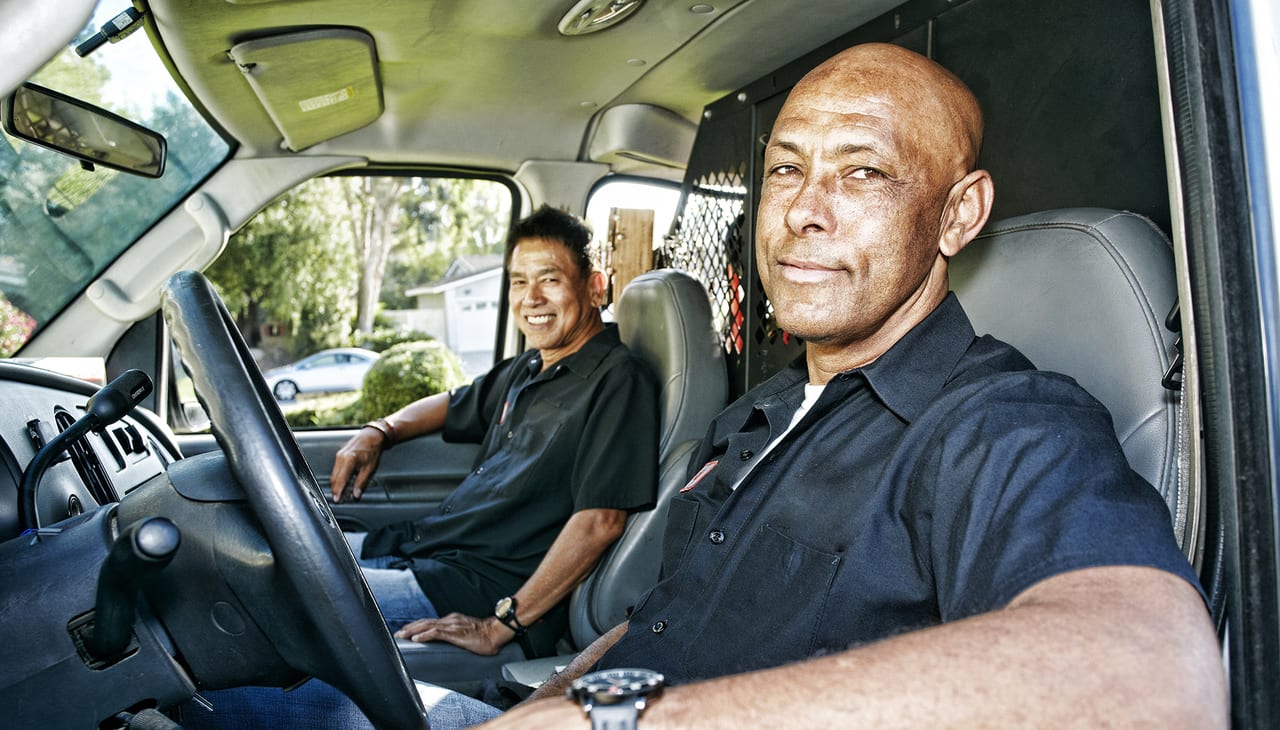
GUEST EDITORIAL
By Ray Kosick
MANAGING YOUR BUSINESS
Out with the old, in with the new
Navigating the 3G Sunset.

It’s no secret that efficient fleet vehicles are a vital component of any successful plumbing or mechanical business. Field service vehicles not only increase new business through brand exposure while on the road; they serve the primary purpose of getting technicians and their equipment to and from job locations. Naturally, fleet managers want to optimize their vehicle operations and performance, increase safety and boost productivity. Telematics technology has long been a reliable tool for helping fleets achieve these goals.
As connected vehicle technology has become more sophisticated over the last two decades, fleets equipped with telematics devices have become an industry standard for improved accountability, compliance, efficiency and safety. Telematics technology is installed inside vehicles and use cellular networks to transmit data back to a cloud server, dismantling data silos and making driver and vehicle information easily accessible from any connected device.
With many fleets utilizing 3G connectivity for their telematics technologies, fleet managers must take action to prevent the soon-to-be shutdown of 3G networks from disrupting business continuity. “3G Sunset” is the term used for the widespread retirement of third-generation connectivity by all of the major network providers in order to pave the way for faster and more expansive technology. When the 3G Sunset is complete, all devices reliant upon 3G, including phones, tablets and 3G telematics hardware, will no longer support network connectivity.
This transition does not mean fleets using 3G devices must leap to 5G to avoid a loss of vehicle and driver data, record service data, track vehicle location, stay in compliance, and keep their operations running smoothly. In fact, 4G LTE is the telematics industry connectivity standard for most fleets and will remain as such for the next seven to 10 years. 4G LTE can transfer telematics data at up to 100 megabytes per second, several hundred times faster than 3G speeds.
As fleets transition to 5G in the coming years, data speeds will become 5,000 times faster than with 3G and much more reliable. This will give fleet managers plenty of bandwidth to engage in video interactions with their drivers in the field.
While 4G is not fading to black any time soon, as fleets transition to 5G in the coming years, data speeds will become 5,000 times faster than with 3G and much more reliable. This will give fleet managers plenty of bandwidth to engage in video interactions with their drivers in the field, provide video analytics to assess safety risks to vehicles and reduce latency experienced on previous networks, all the while offering high network reliability and better accuracy locating and managing vehicles in the field.
The scheduled sunsets for major carriers are as follows:
- AT&T 3G network shut down in February 2022;
- Sprint 3G sunset is scheduled for March 2022;
- T-Mobile will shut down 3G networks in July 2022; and
- Verizon 3G sunset will occur in December 2022.
It’s important that fleet managers stay ahead of the sunset, as there is no guarantee that 3G network connectivity will remain strong until the scheduled deadline. As these dates approach, users can expect a loss in service and blackspots as carriers reduce support for 3G infrastructure.
Fleet managers in the plumbing and mechanical industries need to take quick action to upgrade their devices to avoid loss of access to phones, tablets and other telematics devices that record and store important vehicle information. While this seems like a daunting task, it can be quite simple. Here are a few steps to take to upgrade your fleet.
Assess your need — take inventory of all devices to determine how extensive the transition will be. If the majority of your telematics devices rely on 3G connectivity, it may be necessary to transition in phases, prioritizing the upgrade of more crucial areas first.
Collaborate with experts — team up with your telematics provider to fully understand deadlines, scope of coverage, network carrier specifications and more. Your provider will be an important part of the transition as they can emphasize potential blind spots that could create gaps in coverage once the upgrade is completed.
Schedule installation — factor in plenty of time to transition your fleet before the shutdown. Time is of the essence, so make sure you maximize opportunities to upgrade quickly. Rely on installation partners to maintain efficiency and ease.
Prepare for the future — create a seamless transition plan to guide your fleet through the upgrade. Work with your provider to opt-in for proactive updates and ensure that they offer a warranty and 24/7 support.
While the 3G shutdown may cause temporary struggle, this mandatory upgrade is ultimately beneficial for fleets — improving efficiency as it provides access to:
- Wider coverage range;
- Faster data speeds;
- Higher bandwidth;
- Greater compatibility with emerging technologies; and
- Decrease in delay times due to lagging communication.
Upgrading your telematics technology will modernize your fleet and support your growth as a business, contributing to your overall forward momentum and profitability. As carriers retire their 3G networks, there’s no time to waste. The 3G sunset is coming — don’t leave your fleet in the dark.

Peathegee Inc/Blend Images – stock.adobe.com
Ray Kosick has helped GPS Insight customers ensure success with GPS tracking and telematics technology for nearly 14 years. Kosick began in technical support services, migrated to hardware fulfillment and has served as product manager for the past several years. He holds a bachelor’s degree in geography and psychology from the University of Arizona, and is known as the resident expert on telematics devices within GPS Insight.
